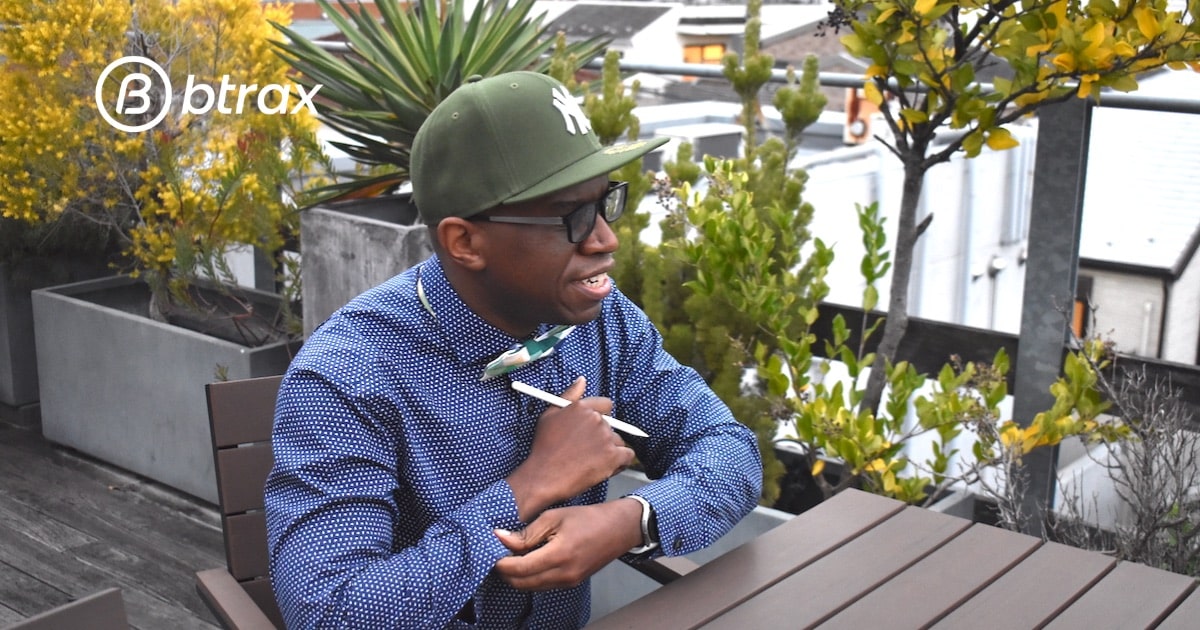
Btrax Design Company > Freshtrax > Zambian-born UX...
Zambian-born UX Designer on the Differences in Service Design in the U.S. and Japan – Interview with Nondo Sikazwe Part-2
I sat down with Nondo Sikazwe again to speak more about the design differences between Africa, America, and Japan.
This Zambian-born designer worked as an architect in South Africa, studied design at Stanford University, and currently works as a UX designer in Tokyo. His unique background gives him a unique set of perspectives when it comes to cultural differences in design.
If you haven’t seen Part-1 of our interview with Mr. Sikazwe, please check it out here: What is the Japanese design market like from the perspective of a designer with a unique background of living and working in Africa and Japan? (Part 1)
In the second half, we asked Mr. Sikazwe about his definition of design, memorable products from each country, and his future goals as a designer.
Table of Contents:
- Design as a “means of solving problems”
- Memorable products from Africa, America, and Japan
- Designers from around the world who are interested in the Japanese market but have no means of learning
- Future goals as a designer
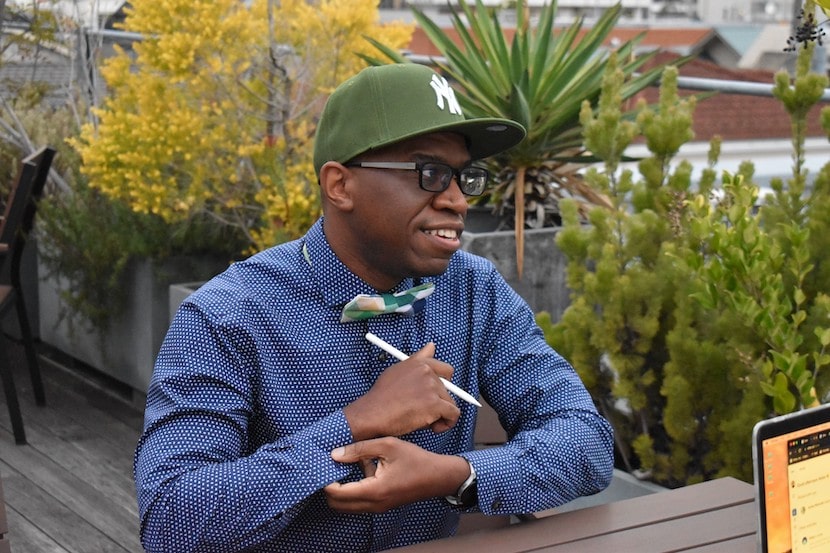
Nondo Sikazwe
Nondo is a Tokyo-based UX designer.
Born in Zambia, he studied architecture at the University of the Witwatersrand in South Africa, and worked on multiple projects as an architect in various African countries before coming to Japan as an intern at Kengo Kuma’s architectural firm. Afterwards, he obtained a master’s degree in engineering from Chiba University, specializing in service design utilizing technology. While enrolled in the master’s program, studied abroad at Stanford University.
While he works as a UX designer at a design company in Tokyo, Nondo also finds the time to engage in a wide range of activities such as working for non-profit organizations and giving lectures at universities.
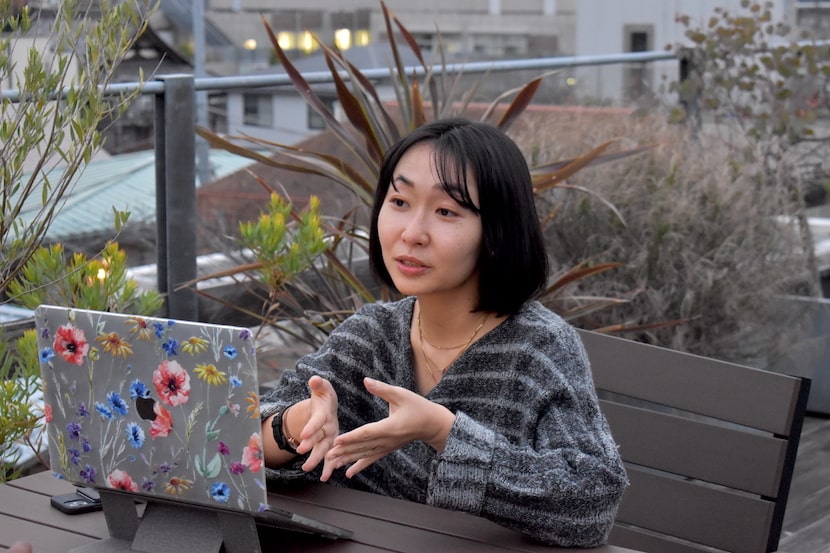
Akiko Sakamoto
Akiko works as a UX researcher at Btrax. She was born and raised in Tokyo. After studying in the Netherlands as an exchange student, she found her passion for start-ups and design. As a bilingual designer, she enjoys engaging with the international community and bridging gaps among cultures.
Design as a “problem solver.”
Akiko:
In our last interview, we talked about your career to date and why you became interested in design. I would like to ask you again, what is your definition of design?
Nondo:
Both architecture and design are important aspects of engineering, in the broadest sense. So, you could say that I was born and raised in the field of engineering. For us (engineers), design is always a means to solve a problem. When we have a problem, the process of solving it is design.
The exceptional case is when art and design are combined. Art has a design part, but design always has an assumed user. I believe that the designer’s job is to solve that user’s problem. I believe that designers must always keep in mind the people who will use the products they design.
Akiko:
I see. Did your studies at Stanford change your way of thinking a little?
Nondo:
Going to Stanford did not change my way of thinking about design, but rather made me more confident. My own conception of what design is had become clear to me quite early on in Zambia, where I was born and raised. Coming to Japan made me more aware that I am a designer from Africa, and my studies at Stanford gave me the confidence and certainty that the path I had taken and what I am doing now are correct.
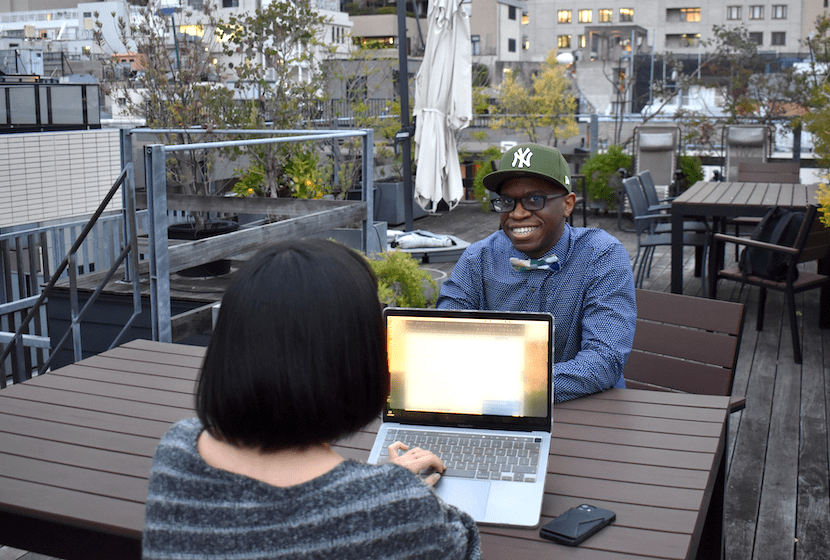
Akiko:
You are an architect, UX designer, engineer, and many other titles, but even though the issues you tackle and the tools you use may change, they all share the same underlying goal and approach of “solving” users’ problems. It’s true that many people generally think of “design” as creating visual beauty that can be seen by the naked eye, but I was reminded once again that design covers everything around us, including urban development, design of electronic devices, software, and items that we use every day. I felt again that everything around us is subject to design.
Unforgettable Products from Africa, America, and Japan
Akiko:
Nondo, you focused on service design in graduate school. Do you have a favorite service or product that you will never forget in Africa, the U.S., and Japan?
Nondo:
That’s a tough question. I think service design is a very holistic and large process. In terms of architecture, I think service design is similar to the concept of urban design, which is not easy to evaluate because everything related to that city is part of the design process. Familiar, but perhaps a bit extreme, Disneyland might be a good example to understand service design. If you have ever been to Disneyland, you know that the design that embodies the Disney worldview is incorporated into the entire experience, from the colors and logos you see when you enter the grounds, to the music you hear, to the shape of the mug you drink from. It’s a very inclusive and broad service experience.
The Leapfrog Phenomenon
Nondo:
Thinking about the service experience in Japan itself may be relatively easy. This is because in many cases, a large company oversees several domains, so that various services are comprehensively connected. However, whether the experience is well-designed is a different story. Many people are in a situation where one company or brand has a share of everything, from business to private life, and many things are tied to one account. This is very important when you think about the service experience.
In Africa, on the other hand, the situation is different, and many companies are independent and divided into smaller units. Where you can find successful examples of service design in Africa in the areas of insurance and healthcare, and banking services. Frankly speaking, for these three areas, I believe that service design in Africa is at the top level in the world compared to Europe and the United States. All of these fields are deeply connected to users’ lifestyles and require holistic solutions.
For example, Discovery Health, an insurance company, offers a service that successfully combines banking and insurance. In Japan, I think paper bank books still exist for the elderly. However, in Africa, where the infrastructure was not in place for a long time in the first place, people who did not even have the option of sending letters suddenly have the option of sending e-mail, skipping the fax machine.
This kind of rapid technological change is called the leapfrog phenomenon, and the elderly people in Africa desperately learned how to use digital products because they had no other way to send messages to people than to learn how to use them. So, in Africa, elderly people can also use smartphones. Believe it or not, there are people who don’t have access to drinking water, but they still have smartphones.
I believe that it is a false stereotype that elderly people are slow to adapt to technology, and in fact, some elderly people are quite adaptable, sometimes learning and using technology faster than the average young person. Of course, there are those who struggle or are bewildered, but if they have no other way they often learn and adapt to new technology faster than we think they should.
In many cases, Japan does not make the leap and always provides a backup option and makes the transition gradually, so users are not forced to make the transition and may become more and more stuck.
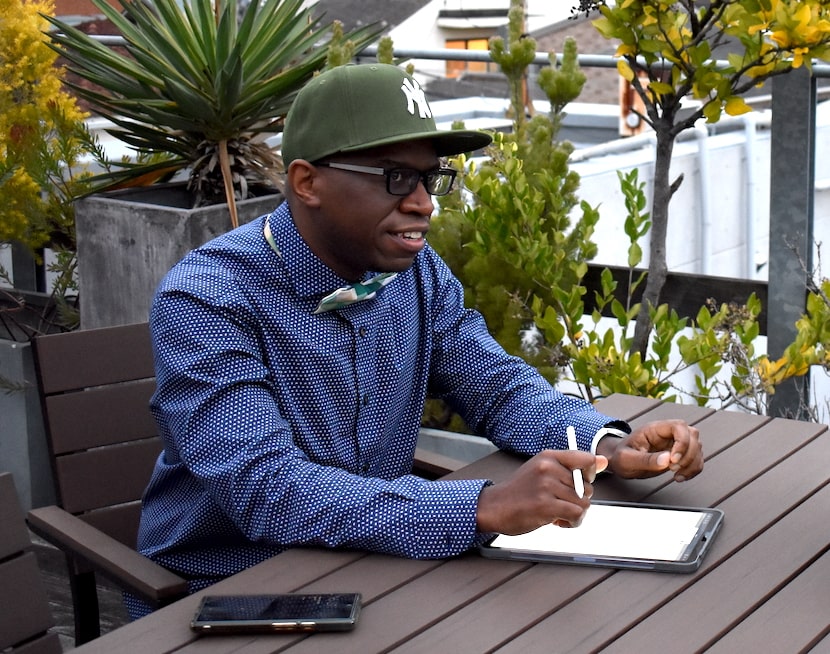
A seamless experience that is beautifully put together
Akiko:
Are you particularly impressed by any Japanese services or products?
Nondo:
There are many big companies in Japan, which tend to be conservative, and it is rare to find a company that has a comprehensive service design.
For example, I often see cases in which a Japanese company provides a product that can be used on both PCs and smartphones, but the experience is inconsistent. While these products may work smoothly on PC, those same products are sometimes poorly adapted to smartphone users which can be a jarring experience for consumers.
However, this doesn’t mean that excellent products don’t exist in Japan.
For example, “Minna no Ginko” from Fukuoka, Japan, has a very good design team that has succeeded in attracting users by designing a banking service that is not bound by the conservative conventions of the Japanese banking industry. Rather, it’s designed with cool branding that appeals to young people and can be easily accessed via smartphone.
The overall quality of physical product design is high in Japan; JR’s Suica is a good example, and the user experience design is excellent. After purchasing a pass, the user can sync it with a smartphone or smartwatch and use it not only to ride the train but also to pay for purchases, seamlessly connecting the physical and digital experiences.
I think many of Sony’s products are also very well thought out. In fact, my father was always a big Sony fan.
So, when I was a kid, we had a lot of Sony products at home. Every time my father bought a new Sony electronic device, I would read the instructions and learn how it worked. I thought it was very cool.
For example, the way the visualizer on the hi-fi set worked, the way the lid opened when you pressed the insert button on a CD, the way the LCD screen presented itself when music was played, etc. Everything was beautifully put together and left a very strong impression on me as a child.
Uber’s Innovation in Comparison with Minibus Taxis
Akiko:
What was the most amazing product in the U.S.?
Nondo:
There are not many products in the U.S. that have left a lasting impression on me, but I was very surprised when I used Uber for the first time.
In Africa, there is a shared-ride service called a Minibus Taxi. This is not a publicly recognized service, but it allows multiple people to share a single vehicle and get around inexpensively. It is one of the cheapest ways to get around in Africa, and when a passenger raises his or her hand on a city street, as you would do in a cab, the minibus cab stops on the spot, and the passenger indicates with a hand sign how far he or she wants to go.
This is a unique culture and everyone knows this hand sign as sign language. This is an essential service for those who have no other travel options financially. However, it is difficult to pay the bill perfectly with cash only, and the calculation tends to be complicated because it is calculated by the driver by memory each time. I used this service very often when I was a student since I was low on money.
When I first used Uber I was very impressed because the issues that Minibus Taxis faced were all resolved in the app, while still maintaining a reasonable degree of affordability!
Minibusses provide a solution to the need to travel far on a very limited budget, and Uber further solves the accounting problems created by this need with technology. Where there are needs and pains like this, innovation is born.
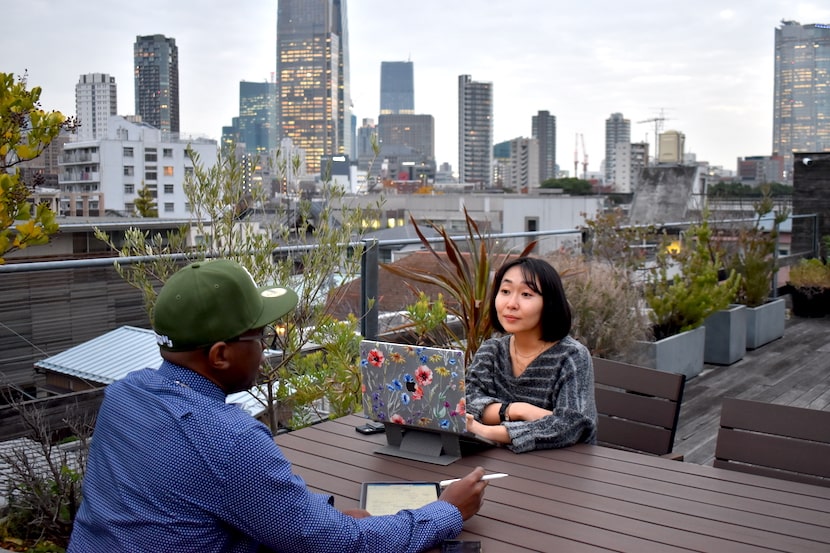
Akiko:
Each region has its own unique characteristics. It’s also interesting to note that while there are differences in the solutions that emerge, similar needs are common to each region. Hearing about the adaptability of the elderly people in Africa, I thought that although each generation has different literacy and common perceptions, it may not necessarily be a difference in ability in many cases. I think it may be important to provide appropriate support for the elderly when creating products using the latest technology, rather than dismissing them as target users from the outset and to discard stereotypes. JR IC cards are so familiar in Japan that I wasn’t aware of them, but they are certainly designed to be a very seamless and smooth experience!
Designers from around the world who are interested in the Japanese market but lack the means to learn
Akiko:
I’m going to change the subject a bit, but you mentioned that you already knew about Freshtrax when we discussed you being interviewed. How did you learn about the btrax blog?
Nondo:
The design company I work for often works with Goodpatch, and since Goodpatch and btrax have close ties, btrax naturally came up a lot. I was doing research for a project and we were discussing what would be good for the local community in Japan, and my colleague shared an article which was from Freshtrax.
The article was in Japanese, but Freshtrax has articles in both English and Japanese, and I think it is very attractive to be able to read an article about the Japanese market in English! The number of designers with international backgrounds in Japan is increasing, and there are many international designers who don’t understand Japanese but are interested in Japan. However, when people from other cultures want to understand the Japanese market from a more in-depth perspective, or when people from outside of Japan want to learn about Japan, there is still very limited information available, especially articles in English. I think there is a need for content in which companies like btrax share their unique knowledge.
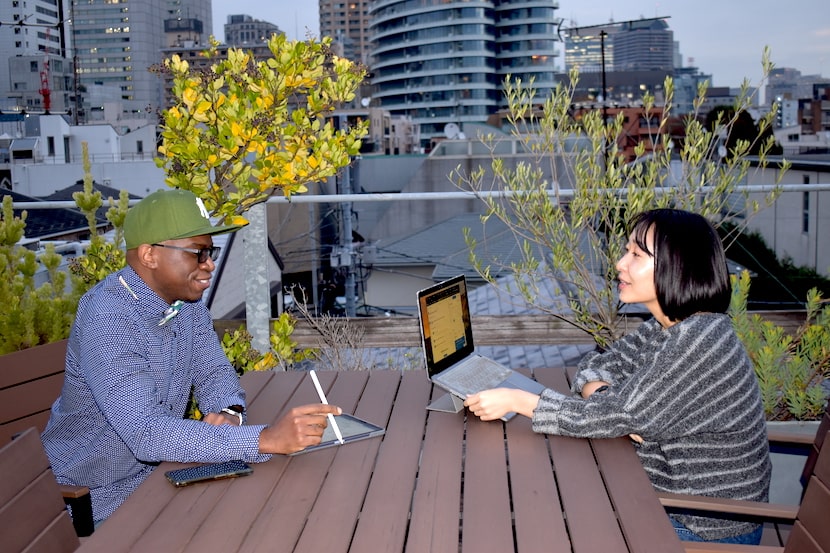
Future goals as a designer
Akiko:
We have heard your story so far, but I would like to ask you about your future. What are your current goals as a designer?
Nondo:
I have several goals that I would like to achieve over the next 3-5 years. One is to deepen my knowledge of service experience and design user experiences that utilize technology. I envision this as service design that includes physical products as well. In Japan and the Middle East, the smart city concept is starting to get more and more attention now, so I would like to find as many opportunities as possible to gain experience in this area.
The other is to actively participate in educational activities. Last year, although it was not my intention, I was given many opportunities to be involved in educational activities. Giving lectures at universities and supporting students has been a learning experience for me, and I have enjoyed it immensely. This year, I would like to focus more on these activities.
I would also like to collaborate a lot with other designers in Tokyo to make the design community even bigger. There are fascinating people, cool movements, and interesting groups in Tokyo, but I think they are currently disjointed. So I would like to play a role in connecting those dots.
As for my long-term goal, the most important one for me is to bring the learning and knowledge I have gained through my current work back to my home country in Africa and localize it. I also believe that there are many possibilities that can be expanded by connecting Japan and Africa, so I hope to play a role as a bridge between the two countries.
In Africa, there is soil where things like the aforementioned leapfrog phenomenon occur, so I think we can develop more things in a shorter period of time than we can in Japan or the Middle East. There are many things to consider according to the local context, so I would like to have as broad and varied an experience as possible now.
Akiko:
I would like to ask you if you have any specific ideas for “connecting Japan and Africa.”
Nondo:
First of all, I would like my Japanese friends to have the experience of living in Africa. I think they can learn and realize many things just as I did in Japan. Many of the projects I was involved in last year were completed within APAC, but this year I hope to create more opportunities for Japanese students to visit Africa. Many universities and embassies are very active in sending students abroad, so I would like to find the right people and increase the number of people who can serve as a bridge.
Akiko:
Last question, what do you value as a designer?
Nondo:
To draw everything into a picture. For me, sketching is the best way to understand things and people. It’s like drawing a comic book. I often sketch how people are talking or what is happening in front of me, and then look back at it later for inspiration. I believe that by drawing what they were using, how they were reacting, etc., I can understand the subject, including their emotions. So sketching is very important to me, both as a UX designer and as an architect.
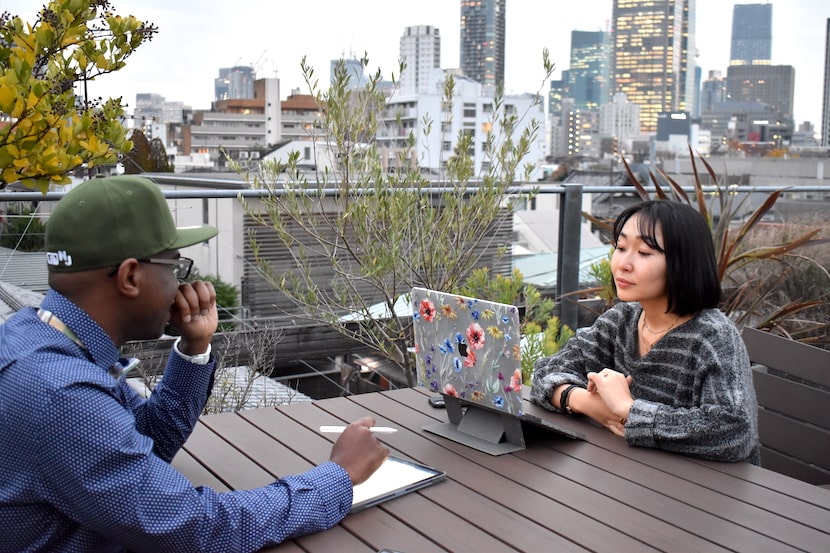
Akiko:
I am very much looking forward to seeing your future activities, as you travel between different countries, cultures, and domains and connect the dots.
Your story reminded me of the fun and power of design, and also the great potential that arises from bridging gaps between different cultures.
I hope that I can continue sharing the positive attributes of Japanese culture and design with the world, while learning as much as possible from other cultures and countries. It’s so important to continue learning and remaining open to fresh ideas -regardless of where we might be, in our careers or geographically!
Thank you very much for your time.
Conclusion
Nondo Sikazwe has studied and worked as an architect and designer in several countries. He has a unique perspective in relation to various services in Japan and the U.S. due to his African background. The contrast of Japan and the U.S. market with Africa, a market which is still developing and undergoing rapid change and growth, was light and refreshing.
His ultimate goal is to contribute to the development of his home country and the continent of Africa. In the process, his comprehensive perspective, ability to connect different people and things, and combined design skills to solve users’ problems and create wonderful experiences will certainly bring value to users in Japan as well as many other countries.
Since its establishment in San Francisco in 2004, btrax has provided design-based services to more than 2,000 companies. With offices in Japan and the United States, we help Japanese companies looking to expand into the U.S. market, improve customer engagement, and increase their fan base by designing everything from optimal experiences to communications.
To learn more about our services, please visit our website.







